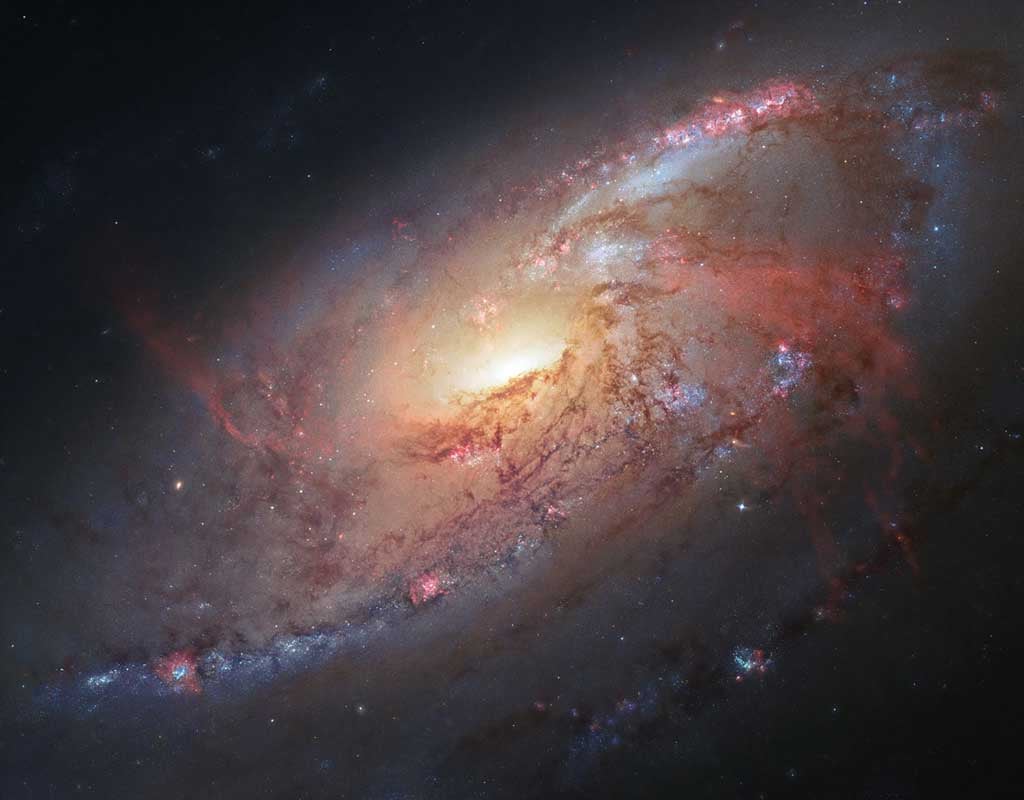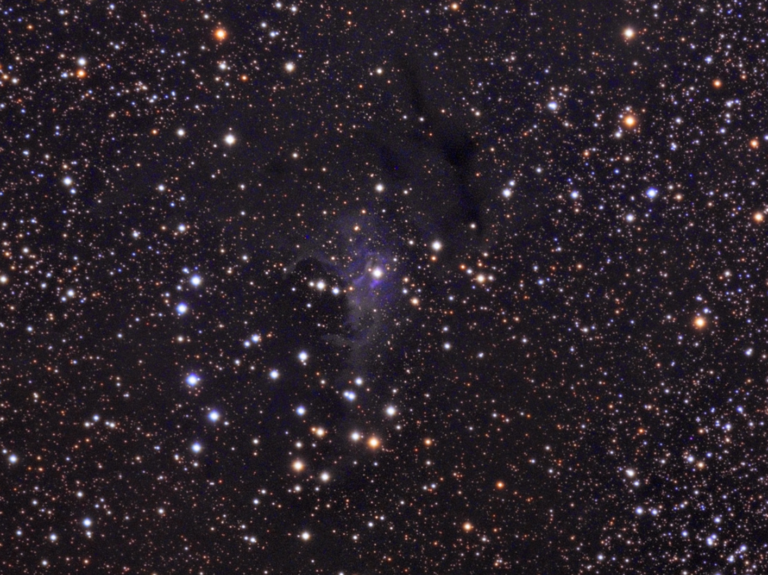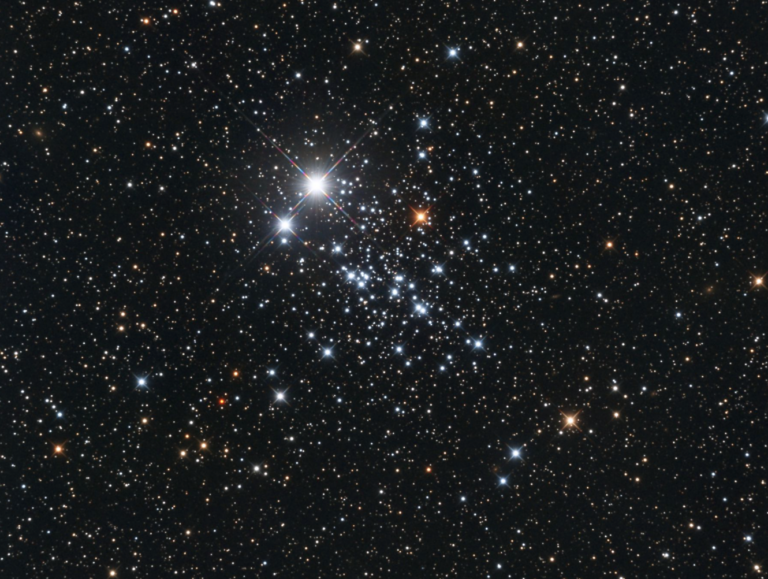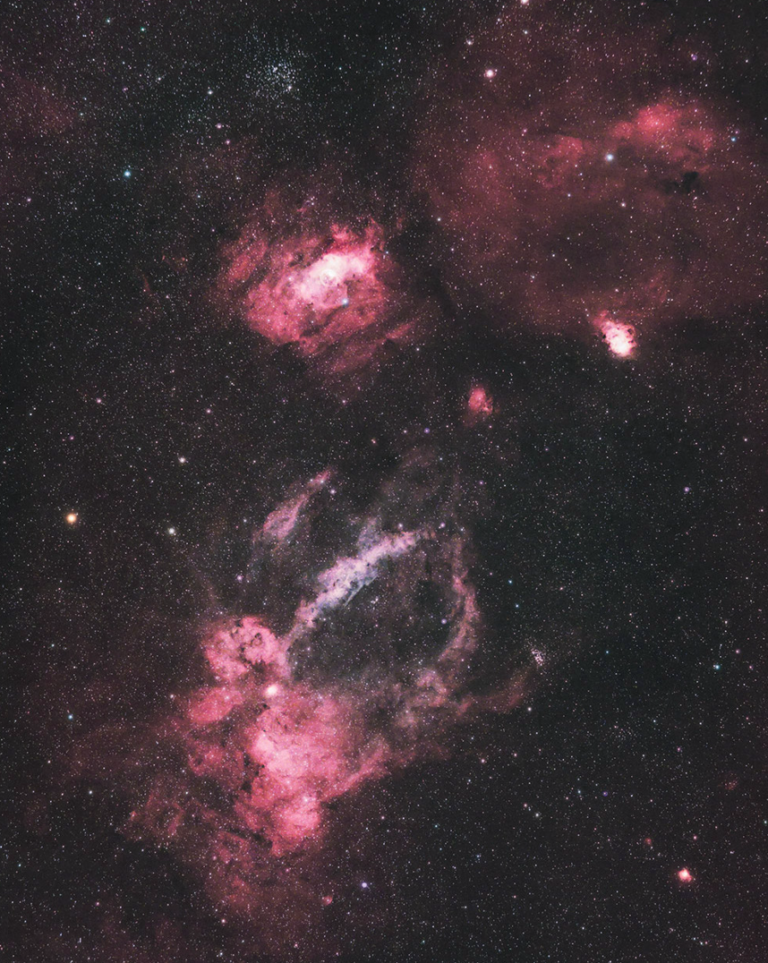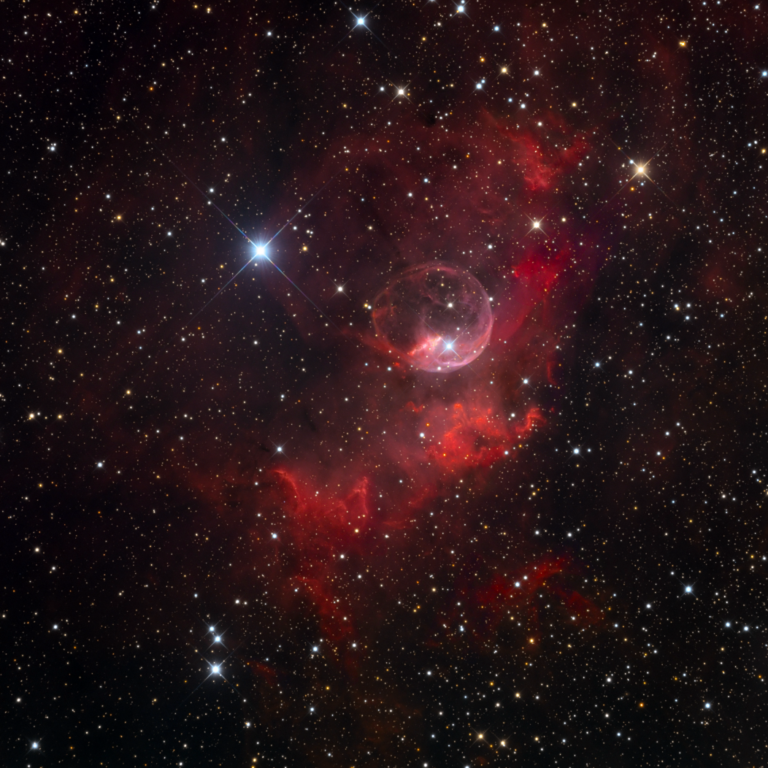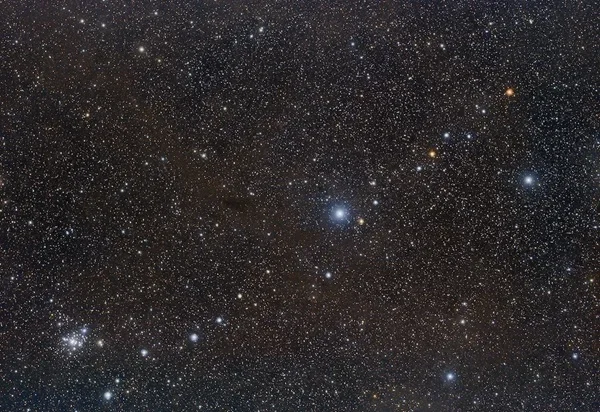The challenges of observing spiral structure in galaxies are many. The two most important considerations are the brightness of the arms and the gaps or distance between them. High-contrast arms are easier to observe in detail with smaller telescopes. And sometimes a galaxy with fewer arms — such as a barred spiral, which often has two — presents clearer arm structure than a galaxy with many arms.
One such barred spiral is M106, located roughly midway between Beta (β) Canum Venticorum and Gamma (γ) Ursae Majoris. Also designated NGC 4258, this galaxy is inclined 64° from face-on. At about 9th magnitude, the galaxy may be seen in small instruments. Its spiral structure is visible in moderate telescopes and becomes more conspicuous with increasing aperture. Beyond the bar structure is an extended disk with a lower surface brightness.
M106 is one of five Messier objects in the small, galaxy-rich constellation of Canes Venatici. M3 is a globular cluster, while the others — M51, M63, and M94 — are spiral galaxies, each with unique characteristics. M106 is an SBbc spiral with a generous size of 18.7′ by 7.2′, corresponding to 135,000 light-years across at its distance of 24 million light-years. It is one-third larger than the estimated size of our Milky Way.
When you observe this galaxy, look for the bright, starlike nucleus. With small telescopes, you will more easily see the core than its other morphological features. Here, you are looking at an explosive nucleus powered by a black hole with some 30 million solar masses.
In the early 1940s, Carl Seyfert studied galaxies with spectroscopy. M106 is classified as a type 2 Seyfert galaxy, due to the narrow emission lines in its spectrum. Later research of such so-called active nuclei found they are similar to quasars, but the galaxies surrounding them are more noticeable because the central black hole’s energy emission is lower. This galaxy also contains water vapor masers — regions of excited atoms that emit coherent light in microwaves instead of visible light like a laser. Watching the motions of these masers allowed astronomers to directly determine the distance to another galaxy, independent of other indicators, for the first time.
While you’re in the neighborhood, check out NGC 4248, a magnitude 12.5 dusty edge-on spiral and likely companion to M106 and NGC 4217. The latter is a more distant edge-on spiral, with a dust lane and a magnitude of 12.4.
Make sure to explore Astronomy’s full list of 101 cosmic objects you must see. New entries will be added each week throughout 2022.
To get the latest astronomical news and observing content delivered directly to your door, subscribe to Astronomy magazine today!

